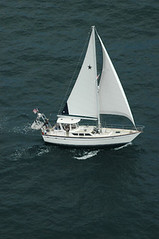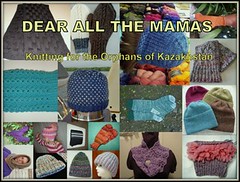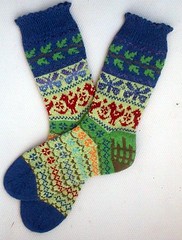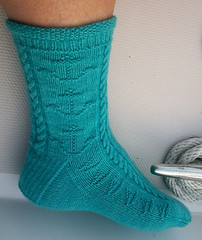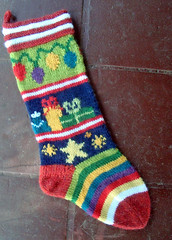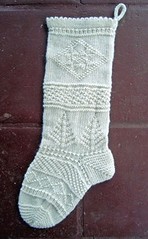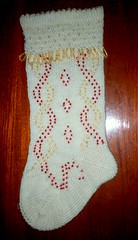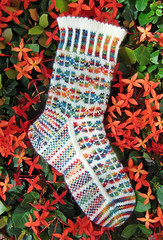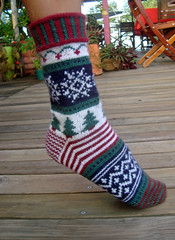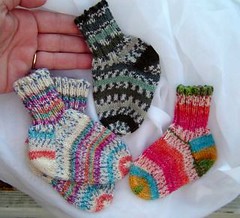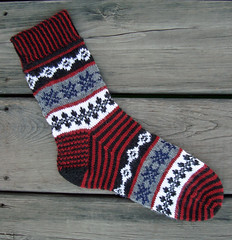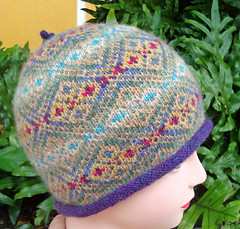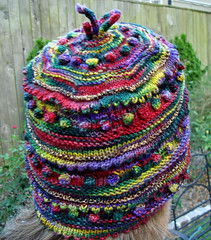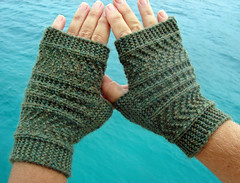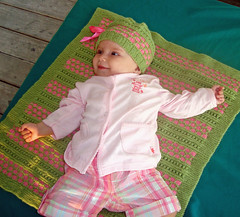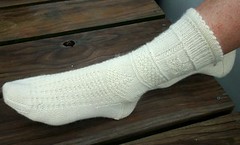
Tuesday, March 02, 2010
BARU, Colombia
 Well, we stayed so much longer than we had planned in the lovely Cholon anchorage that our supplies of fresh foods were running low. So when the folks (Kaye and Sonny) on sailing vessel Valentina announced that they were going on the long dinghy adventure to Baru, we, and several other boat crews tagged along as a dinghy caravan. There was no way we could have done this trip on our own as it entailed winding our way through the mangroves and crossing a couple of wide bays – a total of about 4 miles each way!
Well, we stayed so much longer than we had planned in the lovely Cholon anchorage that our supplies of fresh foods were running low. So when the folks (Kaye and Sonny) on sailing vessel Valentina announced that they were going on the long dinghy adventure to Baru, we, and several other boat crews tagged along as a dinghy caravan. There was no way we could have done this trip on our own as it entailed winding our way through the mangroves and crossing a couple of wide bays – a total of about 4 miles each way! 
Along the way we spotted a few more beach houses owned by wealthy Colombians tucked in along the shoreline. But mostly it was a mangrove and ocean trip. Watch out for oncoming traffic! These passages through the mangrove estuaries serve as “highways” for the local water taxi services and private boats. You can take one of these taxis all the way to Cartagena if you need to buy something or seek serv
 ices beyond the bare basics available in Baru.
ices beyond the bare basics available in Baru.Oh! It turned into a dinghy race as we approached the village - he who gets to the beer store on the dock first gets the beer and soda pop! We lost, mainly because we didn't even know we were racing.

The village itself is not pretty, except for this one quaint street. The roads are rough dirt and we had to watch where we stepped to avoid animal feces (dog, horse, pig), trash, rocks, and erosion gullies. Dogs wandered everywhere and were gene
 rally quite skinny, had skin issues, and were not neutered. This yellow fellow who was “guarding” the outdoors billiard tables looks like the typical short-haired “dog” of the village but he was much healthier than most.
rally quite skinny, had skin issues, and were not neutered. This yellow fellow who was “guarding” the outdoors billiard tables looks like the typical short-haired “dog” of the village but he was much healthier than most.Although there is the very rough dirt road to the village, local transportation is by foot. We saw women kicking and rolling large water barrels and propane tanks along the lanes to get refilled. Human power also came in handy with
 the push carts and wheelbarrows. Burros and horses trudged by occasionally hauling loads. Looking at the photos, you can see t
the push carts and wheelbarrows. Burros and horses trudged by occasionally hauling loads. Looking at the photos, you can see t hat there were no cars although there is a public bus that shows up a couple of times per day for a wild ride to Cartagena. The roar of motorcycles could be heard because these provide taxi service ($1) from the village to the outlying beach houses where quite a few of the local folks live fulltime as ca
hat there were no cars although there is a public bus that shows up a couple of times per day for a wild ride to Cartagena. The roar of motorcycles could be heard because these provide taxi service ($1) from the village to the outlying beach houses where quite a few of the local folks live fulltime as ca retakers.
retakers.For the most part, the houses are made out of simple cinderblocks and concrete with some having clapboard fronts. Not too impressive from the outside. Yet, when we got a chance to peek inside we were impressed with the spotless tile floors and general tidiness of the homes. Also, there was some pr
 etty scroll saw woodwork on several of the houses.
etty scroll saw woodwork on several of the houses.Kaye and Sonny guided us through the town to shop the 3 markets and check out if the banana vendor and the butcher had anything to offer. No bananas. No meat today. There had been a 5-day holiday and stocks were running pretty low. But, we did find
 some potatoes and the fresh local cheese as well as basic staples such as flour and sugar. No bread was available except for some sweet dough rolls.
some potatoes and the fresh local cheese as well as basic staples such as flour and sugar. No bread was available except for some sweet dough rolls.  So, here’s Jonesy and Sonny checking out the merchandise in one of the markets. This is how it works throughout much of rural Latin America – you stand outside and ask for what you need. No touching the merchandise (or stealing it either!) If you don’t see it, ask for it as much of the stuff is out of sight. I only found out that there was cheese available when a local bought some.
So, here’s Jonesy and Sonny checking out the merchandise in one of the markets. This is how it works throughout much of rural Latin America – you stand outside and ask for what you need. No touching the merchandise (or stealing it either!) If you don’t see it, ask for it as much of the stuff is out of sight. I only found out that there was cheese available when a local bought some.
But wait – there’s more! If you feel the urge to go party-hearty at night, head on over to the local disco bar. Hmmmm…it doesn’t give me a warm welcome to see that the bartenders hide safely behind steel bars to separate themselves from the customers. But the concrete bar stools are a nice touch.
 While Jonesy waited for our marisco arepas and papas rellanos snacks to be fried, these dogs waited too for perhaps a little handout. These snacks are made of chopped seafood such as local spiny lobster, octopus, and fish which is surrounded by precooked cornmeal and then fried ($2). The potato rolls (25 cents) were seasoned mashed potatoes, again tucked into the cornmeal batter and fried – YUMMY!
While Jonesy waited for our marisco arepas and papas rellanos snacks to be fried, these dogs waited too for perhaps a little handout. These snacks are made of chopped seafood such as local spiny lobster, octopus, and fish which is surrounded by precooked cornmeal and then fried ($2). The potato rolls (25 cents) were seasoned mashed potatoes, again tucked into the cornmeal batter and fried – YUMMY!
So, after Sonny used the toilet on the bay front with the complete lack of privacy (go figure), we all dinghy'd the 4 miles back to where our boats were safely anchored.
You may have already noticed that we’re often talking about the little run-down towns that we visit including this rural outpost of Colombia. Remember that this is what we see. We see the coastal areas of these countries and often those lands are occupied mostly by poor/ lower income people. This is because the low-lying coasts are much hotter, humid, and bug-infested (therefore less desirable) than the higher altitude interiors. We also are on a fixed-income tight budget so we do not go out to eat in the high-end tourist hotels and resorts except for the rare treat. Many of the beach resorts do not welcome cruisers anyway. So, what we share with you is what we experience. We are not on vacation. This is our life and we love to visit with the peoples of these areas and share their experiences. The rustic simplicity, and often their contentment with their surroundings and lifestyle are contagious. There is a lot that we learn from them.
BLACK FRIDAY
The Friday after Thanksgiving is known as Black Friday in the USA because that is when the holiday gift shopping begins in earnest and many retail merchandisers begin to show a profit (black in the account books) instead of a loss (red). Well, there was no shopping frenzy in this part of the world, but we did indeed have a very somber Friday. In the early morning hours, we were told that a 50-ft British-flagged sailboat had suddenly begun to take on water and had sank on its voyage from the San Blas islands of Panama to where we were anchored in Cholon.
The weather and seas during the night before had built up to a nasty level and several sailboats were roughing it out all night. Then, the emergency radio call from s.v. Kirsty went out. The closest boats to Kirsty changed course and went to help. They tried to toss emergency pumps over to her crew (Jeff and Ruth Morris), but the waves were too rough and the winds were howling. The vessel was taking on too much water anyway. The crew abandoned ship, launched the liferaft and were soon recovered by the s.v. Jupiter Smile.
Upon hearing the news about the sinking, and the fact that 7 sailboats would be joining us later in the day after the unexpectedly rough passage and the bad news of the sinking, Kaye on Valentina organized the “Cholon Care Group”. We knew that all of the crews would arrive hungry because it was too rough to eat and cook while underway, and that they would be exhausted from staying awake all night. So those of us anchored in the bay made a full meal. m.v. Dovekea made turkey chili with the leftover thanksgiving turkey, Kaye baked more pecan pies (such a treat!), I baked a double batch of cornbread, and there was coleslaw and fruit salad from some of the other boats.
Each of us packaged up serving sizes in individual bags. As the boats arrived, we delivered the meals by dinghy brigade to the vessels. They all were surprised and grateful. We met Jeff and Ruth of the lost sailboat who were onboard Jupiter Smile. They seemed to be in shock and dazed and our hearts went out to them. They said that they had hit something, never saw what it was, and immediately began taking on water. Because I knew that they were British, I tucked a few tea bags (plain black tea) into their cornbread package.
KNITTING CONTENT
 3 more pairs of socks and a pair of mittens for the Akkol Orphanage. This first pair of socks is adult-sized (60-st) and knit from some Regia Jacquard #5295 self-patterning yarn. Next up another pair of adult socks knit with Fortissima Colori self-patterning yarn (68-st). The
3 more pairs of socks and a pair of mittens for the Akkol Orphanage. This first pair of socks is adult-sized (60-st) and knit from some Regia Jacquard #5295 self-patterning yarn. Next up another pair of adult socks knit with Fortissima Colori self-patterning yarn (68-st). The  gray pair were knit with Patons Kroy sock yarn in "Windsor Tweed" and is a child-sized pair (56-st). I added some reddish colored stripes to the cuff so they can be matched in the laundry.
gray pair were knit with Patons Kroy sock yarn in "Windsor Tweed" and is a child-sized pair (56-st). I added some reddish colored stripes to the cuff so they can be matched in the laundry.
Then, I switched gears and worked up a child-sized pair of mittens with leftover sport weight yarns. The wine
 colored yarn is JaggerSpun 4/8 Wool-Silk DK, N5626,5B and the white is alpaca yarn. Then for a bit of whimsy - I added some daisy stitch flowers with a single glass bead in the centers.
colored yarn is JaggerSpun 4/8 Wool-Silk DK, N5626,5B and the white is alpaca yarn. Then for a bit of whimsy - I added some daisy stitch flowers with a single glass bead in the centers.MOVING ON
It was hard to do so, but on a bright and sunny November 29th, we motored out into the open sea for the 6-hour trip to Isla Tintipan of Colombia. This is one of the islands of the San Bernardo Islands about 45 miles southwest of Cartagena. Of course, the wind was from the south and “on the nose again” (sing to the tune of “on the road again”) so we only raised the main sail for stability. This sure happens a lot to us and other cruisers. We move the boat to get to other places – not for a day sail around a bay – so in order to actually get there, we have to use the engine quite a bit. Sure, we could tack – sail back and forth sideways to the wind direction – but that would take many more hours/days and would expose us to more changes in the weather.

Anyway, these islands used to be quite dangerous due to the political situation, pirates, and the FARC guerilla forces. But in the last couple of years the Colombian army has reclaimed these islands and they are now considered safe for cruisers. We didn’t go ashore as the town isn’t very scenic and quite overcrowded – really just a large rock totally covered with haphazard concrete buildings. We just anchored and rested up for the overnight voyage the next day.
The next morning it was off to the San Blas Islands of Panama and this time we could SAIL!
Comments:
<< Home
Hello Terry
it is always wonderful to read your blog. it is very interesting to read about your adventures and to hear all about the local places you find. happy days .wendy
it is always wonderful to read your blog. it is very interesting to read about your adventures and to hear all about the local places you find. happy days .wendy
Hi Terry.Thank you for the scenic tour and especially the little video. I love the ocean. I felt so bad for the people who lost their boat. I had tears in my eyes reading about how you all so lovingly cared for the crews.Keep safe and please keep writing. Huggz, Darrell
Terry your post about market shopping brought back childhood memories. While our groceru stores were indoors, we too stood in front of the counter and asked for what we needed. With this kind of shopping, you need a list and definitely are not tempted to do impulse shopping. But alas, grocery shopping is no longer done that way in Germany either. By the way, I just finished your socks, Rippling Waters from the HMG2008 list. I'll post a pic to the group list. I too would rather have the real life of real folks than the tourist info. Renate
How heartbreaking for the folks who lost their home! And thank you for the explanation no the coastal vs inland locales. I was starting to wonder why anyone would want to visit Central America.
Very interesting to know that coastal area are less desirable then inland. I guess that means one could buy land cheap in those areas?
Post a Comment
<< Home


